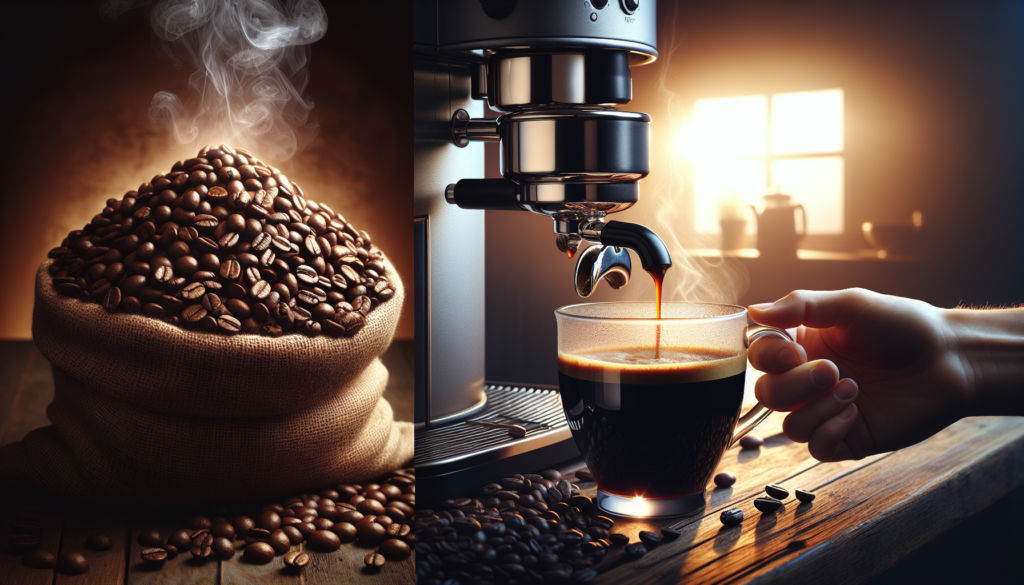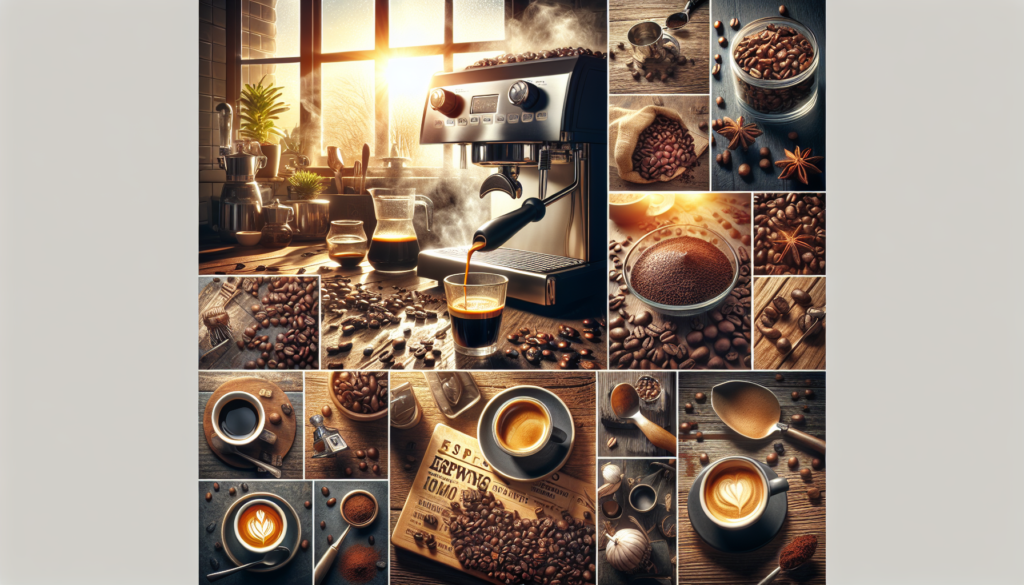Looking to make delicious espresso at home? Wondering which beans are the best for your brewing adventures? Look no further! In this article, we will explore the world of espresso beans and uncover the top contenders for your home brewing satisfaction. From dark and rich flavors to bright and fruity notes, we will guide you on the journey to finding the perfect beans to elevate your espresso game. Get ready to indulge in aromatic blends and bold flavors that will awaken your senses and redefine your love for homemade espresso. Let’s dive in! When it comes to home brewing, choosing the right coffee beans is essential to achieving that perfect cup of espresso. With so many options available, it can be overwhelming to know where to start. That’s why we’re here to guide you through the process of choosing the best espresso beans for your home brewing needs. From understanding the role of espresso beans to exploring different types, roast levels, flavor profiles, and storage methods, we’ll cover everything you need to know to make an informed decision.
Understanding the Role of Espresso Beans
Before diving into the details of choosing espresso beans, it’s important to understand their role in the brewing process. Espresso beans are specifically roasted and ground to create a concentrated and flavorful coffee extraction. They are known for their rich and intense flavors, which are derived from the unique combination of bean variety, roast level, and brewing methods.
Factors to Consider When Choosing Espresso Beans
When selecting espresso beans for home brewing, several factors come into play. These include the type of beans, the roast level, whether to choose single-origin or a blend, flavor profiles, freshness and bean age, whole bean vs. ground coffee, grind size and consistency, and storage and preservation methods. Let’s explore each of these factors in more detail.
Types of Espresso Beans
There are primarily two types of espresso beans: Arabica and Robusta. Arabica beans are known for their complex and nuanced flavors, often described as sweet, fruity, or floral. They have a lower caffeine content compared to Robusta beans. Robusta beans, on the other hand, have a stronger and more bitter taste with a higher caffeine content. Blends of Arabica and Robusta beans offer a balance of flavor and strength.
Roast Levels for Espresso Beans
The roast level of espresso beans greatly impacts the flavors and aromas that are extracted during brewing. There are three main roast levels to consider: light roast, medium roast, and dark roast. Light roast beans tend to have a brighter and more acidic profile, medium roast beans offer a balanced and flavorful cup, while dark roast beans are characterized by their bold and robust flavors.

Single-Origin vs. Blend
When it comes to espresso beans, you have the choice between single-origin and blends. Single-origin espresso beans come from a specific geographic region and are known for their distinct flavors and characteristics. Blends, on the other hand, combine beans from different regions to create a well-rounded and balanced flavor profile.
Flavor Profiles
Espresso beans can offer a wide range of flavor profiles, catering to different taste preferences. Some common flavor profiles include sweet and nutty, chocolatey and rich, citrus and bright, spicy and bold, and fruity and floral. It’s important to consider your personal preferences and experiment with different flavors to find the one that suits you best.

Freshness and Bean Age
Freshness plays a crucial role in the quality of your espresso. It’s important to use freshly roasted beans to ensure that you get the best possible flavors. As beans age, they begin to lose their flavors and aromas. By paying attention to the bean age and purchasing from reputable sources, you can guarantee a fresher and more enjoyable cup of espresso.
Whole Bean vs. Ground Coffee
Another aspect to consider is whether to buy whole bean or pre-ground coffee. While pre-ground coffee offers convenience, whole bean coffee provides greater flavor and freshness. When coffee beans are ground, they begin to oxidize, leading to a loss of flavor over time. By grinding your beans just before brewing, you can maximize the flavors and aromas in your cup of espresso.

Grind Size and Consistency
The grind size of your coffee beans is crucial for achieving the perfect extraction. Different brewing methods require different grind sizes, and using the wrong grind size can lead to under-extraction or over-extraction. It’s important to match the grind size to your brewing method to ensure optimal flavor extraction. Additionally, consistency in grind size is key to a balanced and even extraction.
Storage and Preservation
To maintain the quality of your espresso beans, proper storage is essential. Whole bean coffee should be stored in a cool, dry, and airtight container to preserve freshness and protect against moisture and oxidation. Ground coffee has a shorter shelf life and should be consumed within a few days of grinding. Avoid storing coffee in the refrigerator or freezer, as moisture and odors can affect the flavor.

Popular Espresso Bean Brands
If you’re unsure where to start your search for espresso beans, there are several reputable brands to consider. Blue Bottle Coffee, Lavazza, Illy, Stumptown Coffee Roasters, and Intelligentsia Coffee are among the most popular and highly regarded brands in the industry. These brands offer a wide selection of espresso beans to suit various tastes and preferences.
In conclusion, choosing the right coffee beans for home brewing is a personal and exciting journey. By considering factors such as the type of beans, roast level, single-origin vs. blend, flavor profiles, freshness, whole bean vs. ground coffee, grind size, and storage methods, you can create a delightful and flavorful cup of espresso in the comfort of your own home. So, grab your favorite espresso beans, gear up your brewing equipment, and enjoy the art of brewing espresso at its finest. Cheers to a satisfying and delicious cup of coffee!

